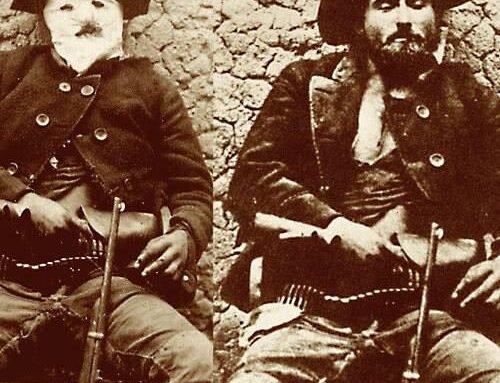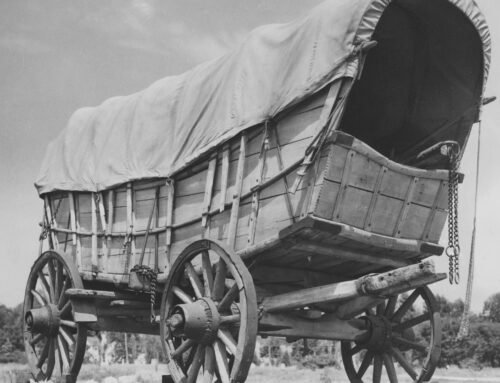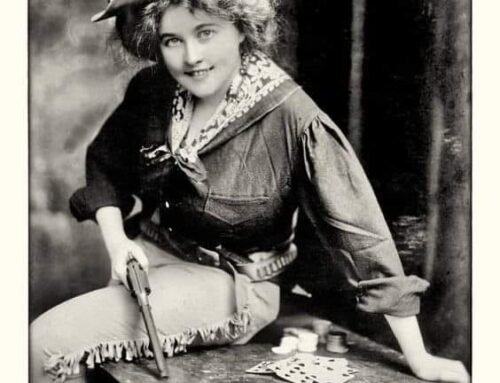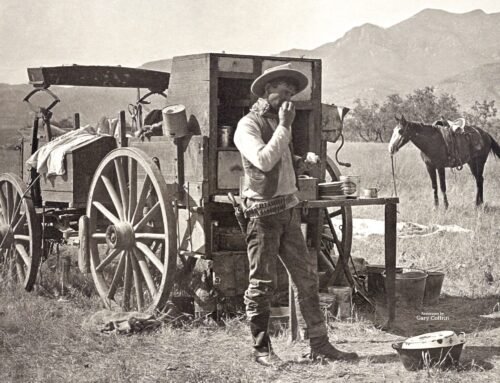Cheyenne Dog Soldiers
By western author Nick Brumby
 “The awesome warriors were “armed to the teeth with revolvers and bows… proud, haughty, defiant as should become those who are to grant favors, not beg them.”
“The awesome warriors were “armed to the teeth with revolvers and bows… proud, haughty, defiant as should become those who are to grant favors, not beg them.”
— Ohio reporter upon seeing Cheyenne Dog Soldiers, 1867
Of all the typical Plains tribes, the Cheyenne were amongst the most feared. When settlers began heading West, they hoped not to encounter the warlike Cheyenne – they were preeminent warriors among peoples whose trade was war.
And of all Cheyenne warriors, the most feared were the ‘Dog Soldiers’ (Cheyenne: Hotamétaneo’o).
From the late 1830s, Dog Soldiers played a dominant role in Cheyenne resistance to the westward expansion of the United States in the area of present-day Kansas, Nebraska, Colorado, and Wyoming, where the Cheyenne had settled in the early nineteenth century.
 Historically, Dog Soldiers have been regarded as both highly aggressive and effective combatants. Named after a Cheyenne legend in which dogs transformed into fierce fighters, Dog Soldiers wore one of the most striking outfits of any Old West fighting force — upright feathered war bonnets. These war bonnets were made of raven or crow feathers and were set so they all pointed upward but were also jumbled in different directions.
Historically, Dog Soldiers have been regarded as both highly aggressive and effective combatants. Named after a Cheyenne legend in which dogs transformed into fierce fighters, Dog Soldiers wore one of the most striking outfits of any Old West fighting force — upright feathered war bonnets. These war bonnets were made of raven or crow feathers and were set so they all pointed upward but were also jumbled in different directions.
These bonnets had immense cultural importance. Bonnets were worn by warriors, not chiefs. They were also worn only when going to war against a significant enemy or during important ceremonies. To receive a bonnet meant recognition that you were a great warrior.

Dog Soldiers also wore a whistle suspended from a thong around the neck and made of the wing bone of an eagle, leggings, breechclout, and moccasins. Their belt was made of four skunk skins. They carried a bow and arrows and used a snake-shaped rattle to accompany their songs.
They had one chief and seven assistants, of whom four were leaders in battle, chosen on account of their extraordinary courage. These four wore, in addition to the usual uniform, a long sash (called a ‘Dog Rope’) which passed over the right shoulder and hung to the ground under the left arm, decorated with porcupine quills and eagle feathers. Of these four men, the two bravest had their leggings fringed with human hair.
During battle, the Dog Soldier would stake his Dog Rope to the ground and fight from that location through the end of the battle. He could not leave the site until the battle was over and a fellow soldier had unpinned his sash.
The Dog Soldiers, with their strict military creed and effective war tactics, commanded a respect not unlike the respect accorded to elite army or special forces units today.

As their influence in Cheyenne society grew, they began to undermine the authority of their own council chiefs. In 1860, they refused to sign a treaty drafted by the Commission of Indian Affairs that would have forced the Cheyenne onto reservations.
Intent on retaining their lands, the Dog Soldiers conducted raids, especially along the Platte River. Though they fought fiercely, it would be a losing battle. American expansionism eventually prevailed, and during the mid-1870s, the power of the Dog Soldiers waned on the Great Plains.
However, the society still exists to this day, with Dog Soldiers even serving in the U.S. Military.

About Nick Brumby
I like a good story. And of all stories, I love westerns the most.
As a kid, I spent far too many afternoons re-watching Clint Eastwood spaghetti westerns, picking up ‘Shane’ for just one more read, or saddling up beside Ben Cartwright when ‘Bonanza’ was on TV each afternoon.
I’m a former journalist and I love horses, dogs, and the occasional bourbon whiskey. I live with my wife, daughter and our ever-slumbering hound in a 1800’s-era gold mining town – our house is right on top of the last working gold mine in the area. There may not be much gold left, but there’s history wherever you look.
I hope you enjoy my westerns as much as I enjoyed writing them!
Happy trails,
Nick

























